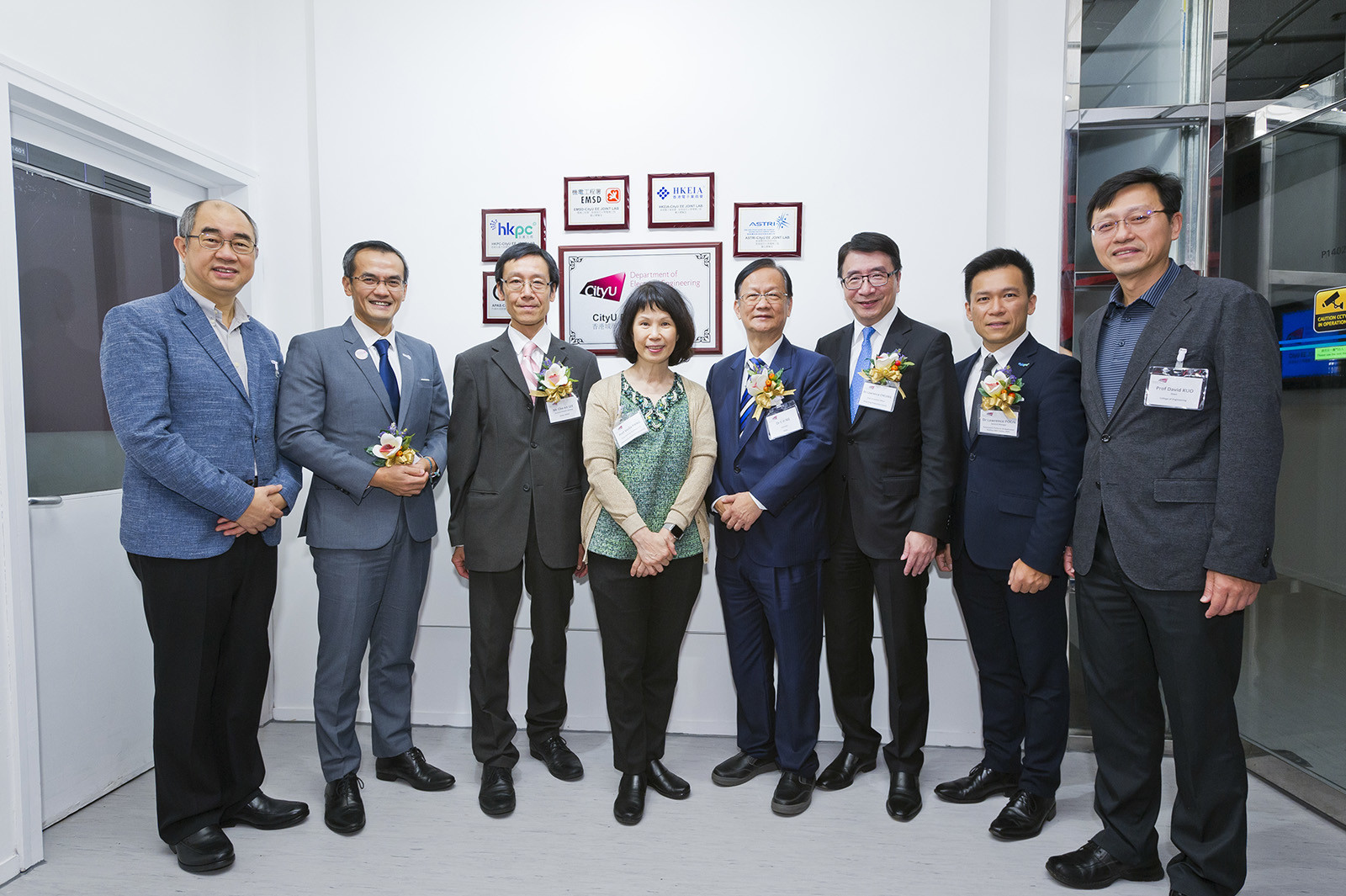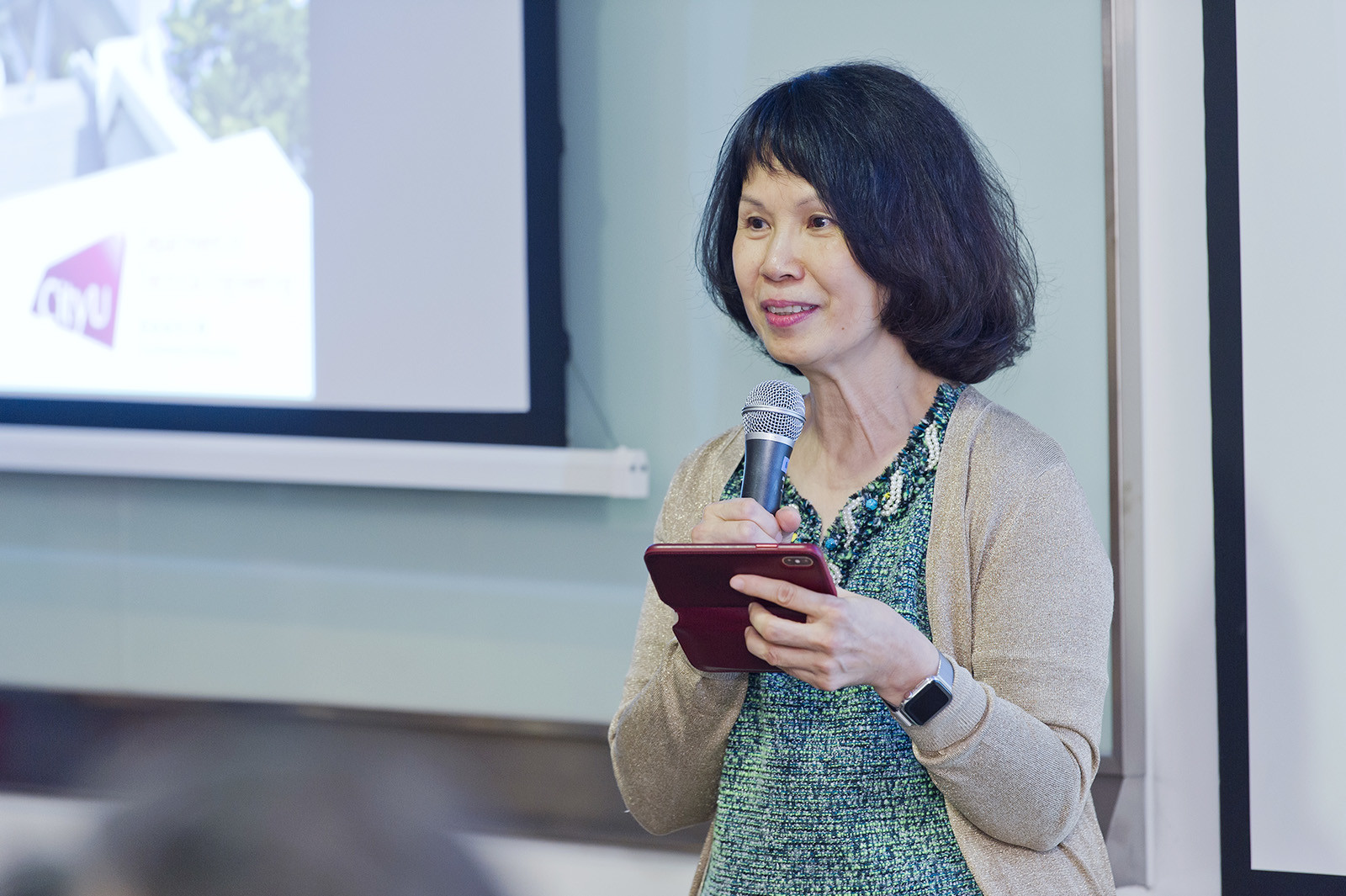5G and DC Smart Building – First Project of CityU EE Joint Lab
Bobo Lo
A launching ceremony for the CityU EE Joint Lab established between the Department of Electrical Engineering (EE) at City University of Hong Kong (CityU) and an anticipated 72 organisations from the private and public sectors was held on 19 September.
The aim is to set up a strong platform to promote the development of innovative technology, knowledge transfer and talent cultivation.
In the first stage of the collaborative scheme, CityU will work with the Electrical and Mechanical Services Department (EMSD) of the Hong Kong SAR government, Hong Kong Productivity Council (HKPC), Hong Kong Applied Science and Technology Research Institute (ASTRI), Hong Kong Electronic Industries Association (HKEIA), and Automotive Platforms and Application Systems R&D Centre (APAS R&D Centre).
A series of projects, including the “5G and DC smart building” in collaboration with EMSD and ASTRI, will be launched.
The project “5G and DC smart building” aims to promote the advancement of 5G (fifth generation mobile communication technology) and the application of DC (direct current) through the installation of a 5G network and DC power equipment in a building to enhance energy efficiency and energy saving.
Constrained by conventional technology, most household appliances currently use AC (alternating current). Devices like TV sets and laptop computers that use DC for operation need to use a transformer, which not only affects efficiency but also consumes more energy.
The project “5G and DC smart building” will study the feasibility and technology requirements for household appliances to use DC. Related tests will be performed by using the facilities at EMSD. The project expects new DC household appliances to reduce as much as 10% of power consumption. Also, if the appliances are used together with solar panels that generate DC, it could promote the development of green energy.
Officiating guests at the joint lab launching ceremony were Professor Stella Pang, Head of CityU’s Department of Electrical Engineering, and representatives from five collaborative organisations, including Mr Lee Che-kit, Assistant Director (Acting) of EMSD, Dr Lawrence Cheung, CIO of HKPC, Mr Hugh Chow, CEO of ASTRI, Dr Ng Chi-ho, Chairman of HKEIA, and Dr Lawrence Poon, General Manager of APAS R&D Centre.
Professor Kuo Tei-wei, Dean of College of Engineering and Professor Raymond Chan Hon-fu, Dean of College of Science, also attended the ceremony.
“We are grateful to all collaborative partners and delighted to have the opportunity to work together with many organisations in the industry to promote the development of Hong Kong’s innovative technology. I believe CityU’s EE Joint Lab can contribute to local society as well as the world by enhancing technology development, commercialisation of technology and connection with talents,” Professor Pang said at the ceremony.
The CityU EE Joint Lab Scheme will run for three years, with new partners joining in each quarter. In the first stage, the Lab will set up an online network, provide regular updates on the progress of projects and research, and be prepared to work with more industrial partners on technology development. It will organise seminars on opportunities for industrialists, academics and researchers to exchange ideas and enhance collaboration among the government, industry and academic sector.
The strong research and industrial network of partner organisations will facilitate the solicitation of funds for research projects. It will offer more internship opportunities for CityU’s EE students. With internship periods varying from two months to one year as well as the professional advice offered by industrial leaders, students can explore their potential and be well equipped for future careers within the industry.
Actively seeking more partners, the Lab is currently discussing collaboration opportunities with six technology companies in Hong Kong, mainland China and other countries. The list of new collaborative partners will be announced at the end of this year.

